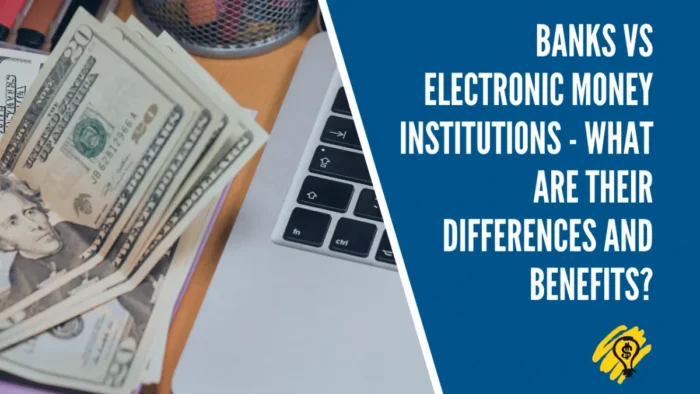One of the most important issues facing businesses today is managing their money effectively. The right financial tools and systems can save you time, and give you a competitive edge. But the choices available can be overwhelming.
Banks and electronic money institutions (EMIs) are both financial institutions that offer a variety of services to their customers. However, there are some key differences between banks and EMIs that consumers should be aware of before choosing which institution to do business with. In this article, we will explore the benefits of banking with a traditional bank as opposed to using an EMI.
Banks and EMIs 101
Banks are financial institutions that have been around for centuries. They offer a variety of services to their customers, including savings and checking accounts, loans, and investment products. Banks are regulated by government agencies and must follow strict rules and regulations. In Lithuania, there are both banks and EMIs. EMIs require a Lithuania electronic money institution license to start operating. EMIs are a newer type of financial institution that offers many of the same services as banks. However, EMIs are not subject to the same regulations as banks. This allows them to offer some unique benefits to their customers.
Benefits of Banking with a Traditional Bank
Banks are subject to strict regulation by government agencies such as the FDIC, which provides deposit insurance for customers in case of bank failure. EMIs are not subject to the same level of regulation, meaning that your deposits may not be as safe if you bank with an EMI. Banks also offer a wide variety of services beyond just depositing and withdrawing money. These can include things like investment products, small business loans, personal loans, and more.
EMIs typically only offer basic banking services such as deposits and withdrawals. Banks typically have large customer service departments staffed with trained professionals who can help you with any questions or problems you may have. EMIs usually have smaller customer service teams and may not be able to provide the same level of support as banks.
Cons of Traditional Banking
Banks can be slow to adapt to new technology and may not offer the same level of online and mobile banking features as EMIs. They may also charge higher fees for some services, such as wire transfers or international transactions.
Benefits of Banking with an EMI
EMIs typically offer higher interest rates on savings accounts than banks. This can help you grow your money faster. EMIs also tend to have lower fees than banks. For example, some EMIs don’t charge monthly maintenance fees or fees for making withdrawals from ATMs. Banks also tend to have stricter requirements for opening an account. For example, you may need to maintain a minimum balance in your account or meet other requirements to avoid paying a monthly fee. EMIs typically have less stringent requirements for opening an account, so it may be easier to qualify for an account with an EMI. EMIs also offers some unique benefits that banks don’t provide. For example, some EMIs allow you to hold multiple currencies in your account. This can be helpful if you frequently travel or do business in different countries.
Cons of EMI
Even though there are some benefits of banking with an EMI, there are also some potential downsides to consider. One of the biggest risks of banking with an EMI is that they are not subject to the same level of regulation as banks. This means that your deposits may not be as safe if you bank with an EMI. Additionally, EMIs typically have smaller customer service departments than banks. This can make it difficult to get help if you have questions or problems with your account. Finally, some EMIs only offer basic banking services such as deposits and withdrawals. If you’re looking for additional services such as loans or investment products, you’ll need to find another financial institution that offers these products.
What Do You Need?
Now that you know the key differences between banks and EMIs, you can decide which type of institution is right for you. If you need a full-service bank with a wide range of products and services, a traditional bank may be the best choice. If you’re looking for an institution with lower fees and higher interest rates, an EMI may be the better option. It’s important to shop around and compare offers from both types of institutions before making a decision.
The best choice for you will depend on your individual needs and financial goals. If you want the peace of mind that comes with banking with a regulated institution, then a bank may be the best choice for you. However, if you’re looking for higher interest rates and lower fees, then an EMI may be a better option. Be sure to compare the features and benefits of each type of institution before making a decision.



